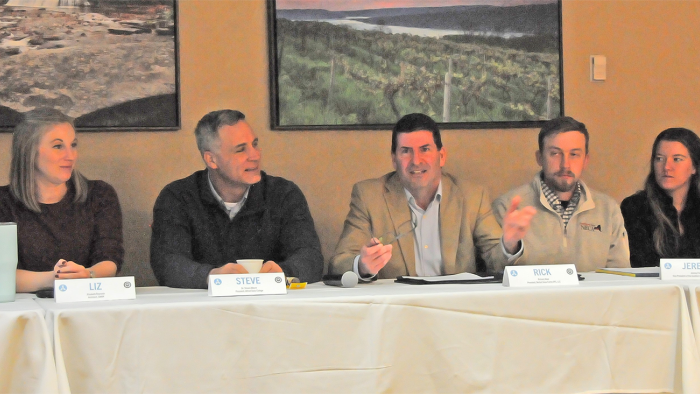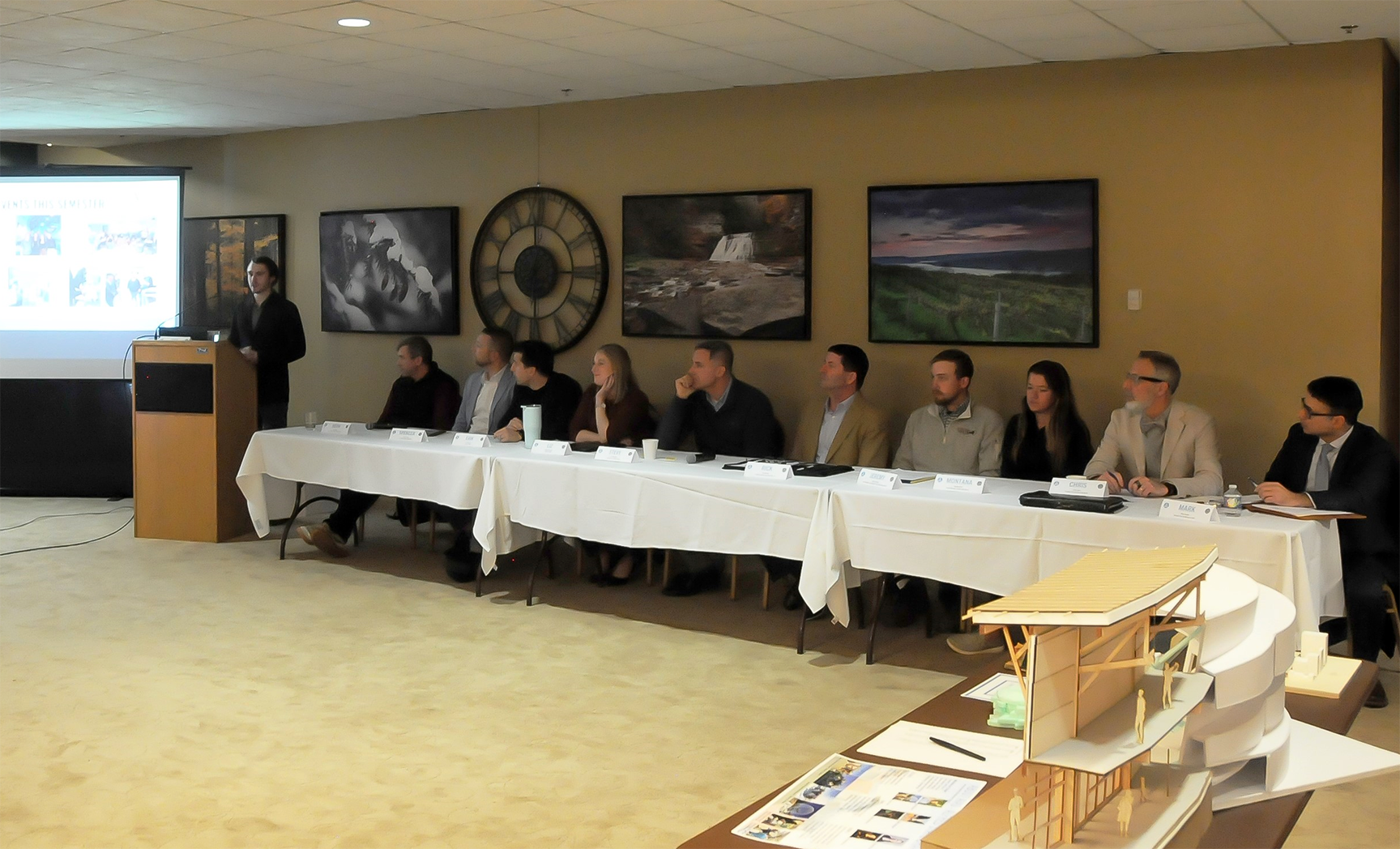
At a glance
"As an emerging professional speaking with architects in the field, understanding the economic side of projects is the most prominent skill missing from a graduate's kit of knowledge."
Jack Christie
President of the Alfred State AIAS Chapter.

Alfred State College's American Institute of Architecture Students (AIAS) Chapter recently hosted a panel-style discussion entitled “The Economics of Architecture.”
The conversation helped bridge the gap of economic knowledge between students and professionals. The discussion served as a vessel of communication between architects, clients, and contractors and encouraged them to express their views on how economics are dealt with in a building project.
The panel consisted of the following diverse group of professionals:
Mark Pandolf, ’88 - Principle, Plan Architectural Studio
Chris Lopez - Principle, Plan Architectural Studio
Dr. Steven Mauro - President, Alfred State College
Elizabeth Reynolds, ’13 - Architect, SWBR – Emerging Architect of the Year AIA Rochester
Erik Reynolds, ’12 - Architect, SWBR
Spencer Read, ’05 - President, Mitchell Design Build
Jeremy Frederici - Vice President of the Southern Tier, Schuler-Haas Electric
Montana Wolf - Project Manager, Schuler-Haas Electric
Richard Allen - President, Norbut Solar Farms EPC, LLC
 The panel concentrated on the topic of economics in the building world, a topic historically under-discussed in the academic setting.
The panel concentrated on the topic of economics in the building world, a topic historically under-discussed in the academic setting.
"As an emerging professional speaking with architects in the field, understanding the economic side of projects is the most prominent skill missing from a graduate's kit of knowledge," said Jack Christie, President of the Alfred State AIAS Chapter. “This event pulled back the economic curtain and showed forty students project aspects such as budget and fees through the lens of contractors, clients, and architects.”
The panelists were asked questions regarding the economic themes of building projects. One question asked of the panel members was, "What is your greatest challenge when discussing project economics with the other two parties?"
The resulting discussion that emerged from this question revealed that ensuring all parties fully understand the economic priorities of their counterparts is key to success when creating a building.
Having the opportunity to ask questions of professionals with priceless insight can provoke insightful conversations that give students an edge in the classroom and the professional arena. “I thought that the questions that were asked of the panelists (architects, clients, and contractors) by AIAS were well thought out & appropriate for the event (and timely based on post-COVID economics in our industry). Those questions fostered a great discussion amongst everyone involved and made for a successful event for all attendees,” said Rick Allen, President of Norbut Solar Farms EPC, LLC.
The Economics of Architecture sought to shatter barriers and blind spots that have historically slowed down the speed, quality, and efficiency of the building creation process. The event shed light on the uptick in architecture and construction due to the pent-up demand created by the COVID-19 pandemic. This current industry environment helped students and professionals conclude that collaboration is critical to success and efficiency in the building process.
The event was preceded by a dinner graciously sponsored by the Alfred State President Dr. Steven Mauro.
About AIAS: The AIAS acknowledges that architectural practice is in a perpetual state of evolution, with a significant portion of this transformation commencing in the realm of education. Their commitment is to proactively stay at the forefront, furnishing their members with priceless experiences that equip them for their entry into the architectural profession and equip them with skills and knowledge to navigate its future landscape.
